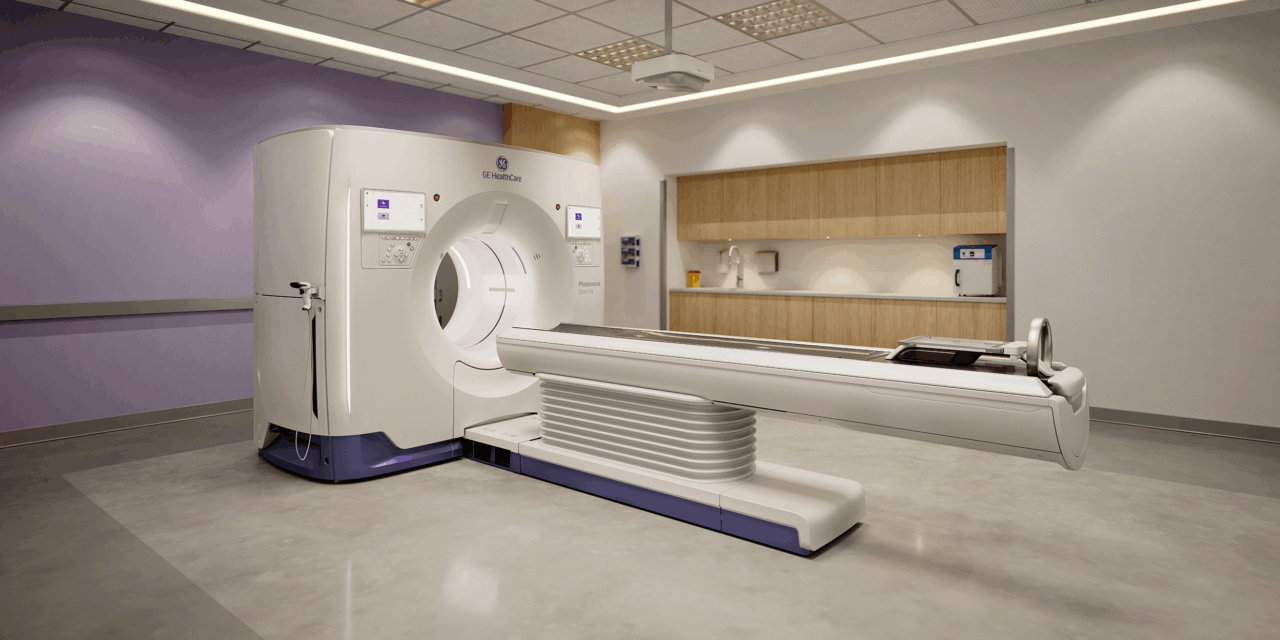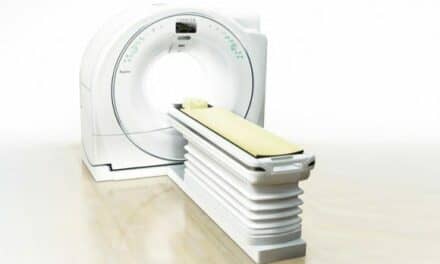The new 510(k)-pending system is designed to simplify workflows with a single universal scan approach, aiming to boost efficiency and reduce complexity across multiple CT exams.
GE HealthCare announced the submission of a 510(k) to the US FDA seeking clearance for Photonova Spectra, its new photon-counting computed tomography (CT) system with AI algorithms.
Built on GE HealthCare’s proprietary Deep Silicon detector technology, Photonova Spectra is designed to deliver spectral and spatial resolution for ultra-high-definition imaging with wide coverage, seeking to enable fast acquisition speeds, precise visualization of anatomical structures, and enhanced material separation.
Photon-counting CT represents an advancement in medical imaging. Unlike conventional CT systems that convert X-rays into light before measuring them, photon-counting CT counts individual X-ray photons and measures their energy, enabling the potential for higher spectral and spatial resolution and improved tissue characterization. This process makes it possible to give clinicians more information and confidence to help detect and diagnose disease, according to a release from GE HealthCare.
“Built to give healthcare teams the clarity and confidence they need, this system aims to redefine decision-making and care delivery, meeting today’s challenges and tomorrow’s possibilities,” says Peter Arduini, President & CEO of GE HealthCare, in a release. “This is innovation with impact designed to reshape workflows, sharpen image quality, and empower confident, timely decisions.”
Leveraging Silicon
Silicon stands out as a high-performing semiconductor material due to its purity and structural consistency, according to a release from GE HealthCare. When interacting with X-ray photons, its composition enables the precise measurement of photon energy and delivers high levels of energy resolution. This capability can allow clinicians to obtain images with high contrast, impressive low-contrast detectability, and improved material characterization for potentially greater diagnostic confidence.
Leveraging GE HealthCare’s Deep Silicon detector design, Photonova Spectra aims to enhance image quality by reducing signal overload and improving energy separation. This enables GE HealthCare’s photon-counting CT system to distinguish between different materials such as iodine, calcium, and fat. Additionally, its wide detector coverage and rapid rotation speed (0.23 seconds) support fast acquisition and motion-free imaging.
“Photon counting CT is a fundamentally different approach to imaging. It can be thought of as particle physics in action,” says Giuseppe Toia, MD, assistant professor of radiology, associate section chief of abdominal imaging and intervention, and program director of abdominal imaging and intervention fellowship with the department of radiology at the University of Wisconsin School of Medicine and Public Health, in a release. “Being involved in developing and testing the Deep Silicon detector has allowed us to assess how the technology can be applied to address common issues such as improving spatial resolution and attaining accurate CT numbers. The goal of using photon counting CT is to help differentiate materials and reveal diagnostic details, which is of interest to radiologists for informed clinical decision-making and streamlined workflows.”
Harnessing More Data
GE HealthCare’s Photonova Spectra is designed to maximize the vast amounts of data provided, harnessing up to 50 times more data than conventional CT with the help of NVIDIA’s accelerated CT to enable advanced reconstruction techniques and precise outputs with the aim of supporting enhanced clinical decision-making and smooth workflows.
“Accelerated computing and AI are the essential engines driving the transformation of medical imaging today, moving us from passive data capture to active, intelligent clinical workflows,” says Kimberly Powell, vice president of Healthcare at NVIDIA, in a release. “By working on the technology’s development and pursuing opportunities to pair GE HealthCare’s Deep Silicon architecture with NVIDIA’s Blackwell platform in the future, we aim to unlock the full potential of spectral imaging, turning massive volumes of data into actionable insights. This collaboration is helping reshape what is possible in diagnostic imaging and aiming to set a new standard for clinical efficiency and precision.”
Photonova Spectra also aims to simplify the CT process with Effortless Workflow with universal full fidelity scan, which enables a one-scan approach to reduce exam-specific protocols and enable automated reconstruction of ultra-high-resolution spectral images on demand. Its CT ONE operator environment and automated features, including Auto Positioning, aim to help improve consistency across GE HealthCare systems, while its full-detector coverage and Deep Silicon design help deliver impressive image quality.
Photo caption: Photonova Spectra
Photo credit: GE HealthCare



